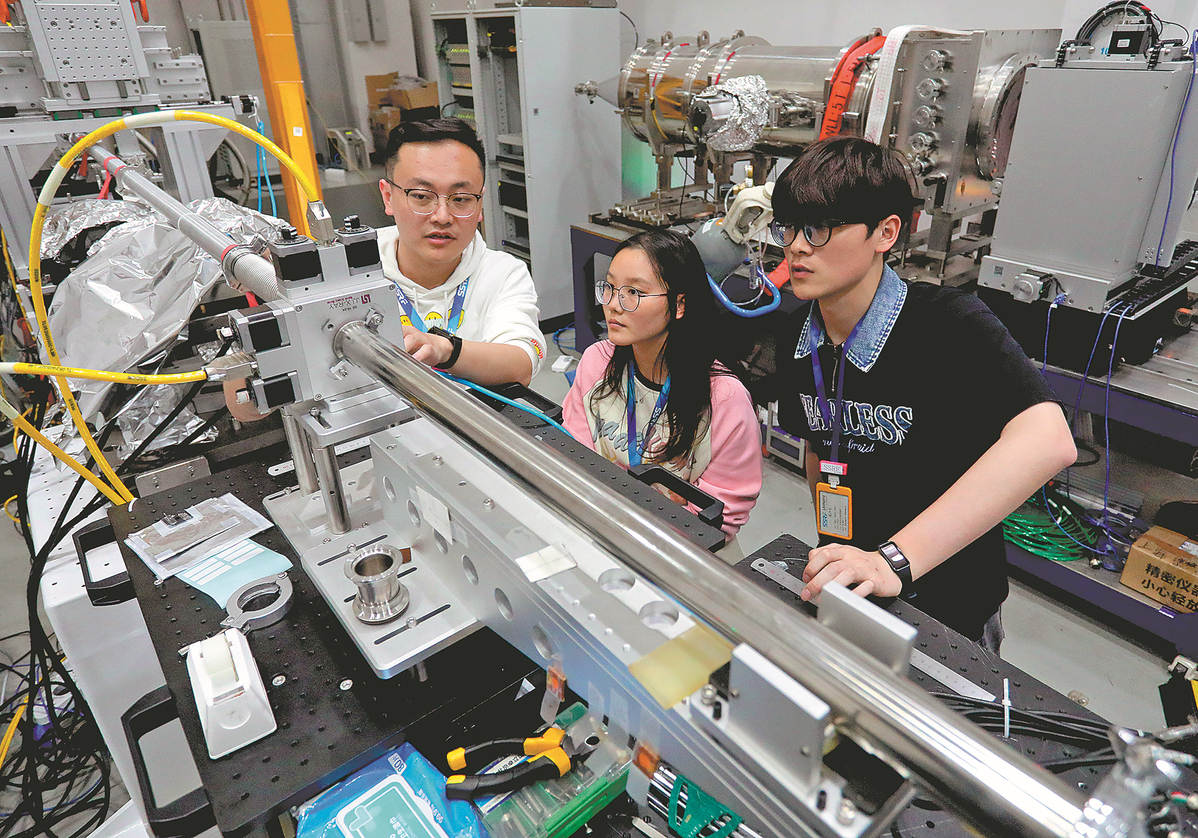


Scientists inspect the Shanghai Synchrotron Radiation Facility in Shanghai in April. FANG ZHE/XINHUA
This has not only made outstanding contributions to addressing key bottlenecks in national development but has also significantly promoted socioeconomic development, according to the CAS.
Leveraging these facilities, a number of nationally influential scientific and technological innovation centers and talent hubs have gradually emerged on the international stage.
The Beijing Spectrometer III International Cooperation Group, based on China's large scientific facilities such as the Beijing Spectrometer III and the Beijing Electron-Positron Collider, has attracted over 70 research institutions and more than 600 researchers from 18 countries and regions due to its leading research capabilities internationally.
The endeavor to develop large scientific facilities continues. This year, construction began on the Human Organ Physiopathology Emulation System, aiming to help scientists accurately simulate human physiological and pathological states, and analyze complex human functions and regulatory mechanisms, which is of great significance for life science research and biopharmaceutical development, according to the CAS.
点击右上角![]() 微信好友
微信好友
 朋友圈
朋友圈

请使用浏览器分享功能进行分享
